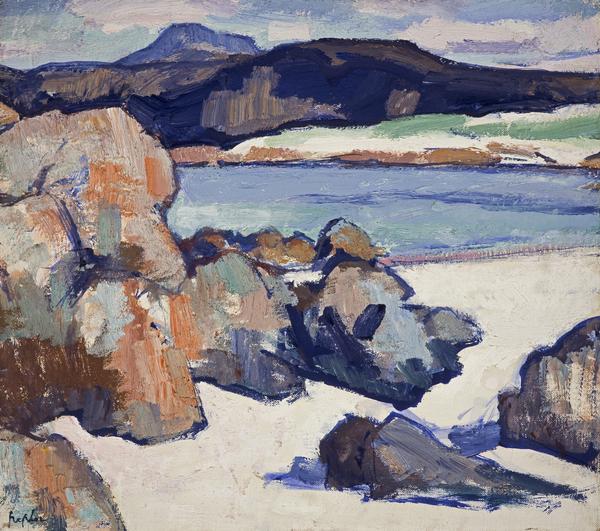Eástre (Hymn to the Sun)
About this artwork
Although best known as a painter, Fergusson also made several sculptures. The title of this bust refers to Eástre the Saxon goddess of spring, and it is believed to be a portrait of the artist’s wife Margaret Morris. As a dancer and leader of a dance school, Morris was involved in a performance called ‘Hymn to the Sun.’ For Fergusson, she represented the sophisticated modern woman who was simultaneously in touch with primeval forces through the rhythms of dance. The hard, highly-polished surface of the sculpture evokes themes of modernity and the machine age, and gives the bust a radiant ‘other worldly’ quality. It shows Fergusson’s awareness of contemporary developments in the avant-garde, particularly of the work of the sculptor Constantin Brancusi.
Updated before 2020
see media-
artist:John Duncan Fergusson (1874 - 1961) Scottish
-
title:Eástre (Hymn to the Sun)
-
date created:1924; cast 1971
-
materials:Brass
-
measurements:41.80 x 22.00 x 22.50 cm
-
object type:
-
credit line:Purchased 1972
-
accession number:GMA 1263
-
gallery:
-
subject:
-
glossary:
-
artwork photographed by:Antonia Reeve
John Duncan Fergusson
John Duncan Fergusson
'Scottish Colourist' John Duncan Fergusson was one of the most influential Scottish painters of the 20th century. Mostly self-taught, he moved to Paris in 1907, where he became a member of the city art circles to which artists such as Matisse and Picasso also belonged. The outbreak of the First...










